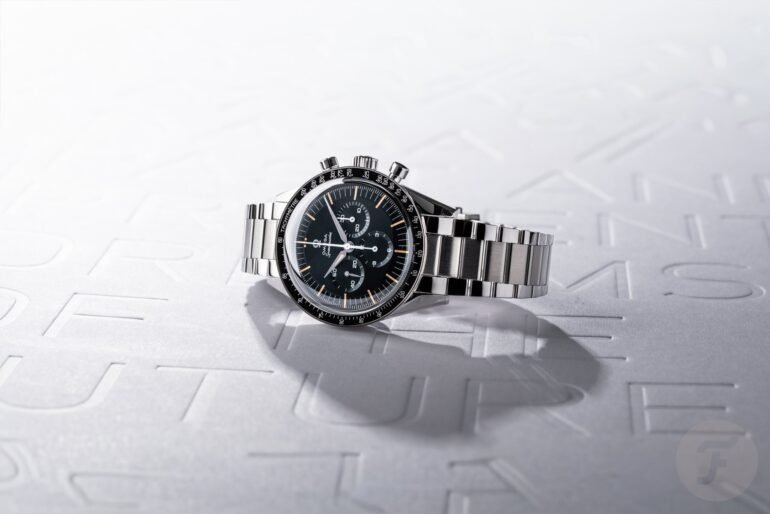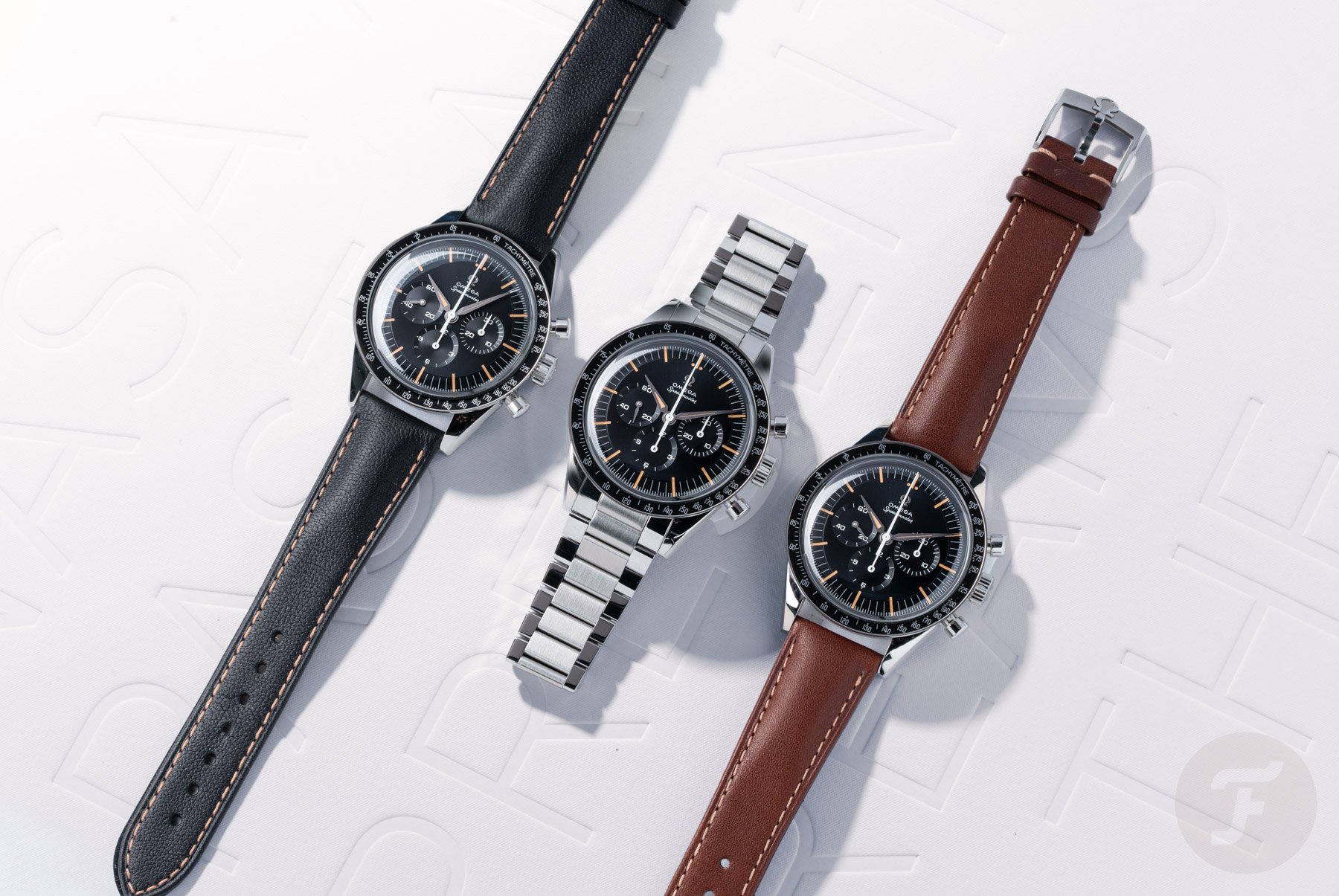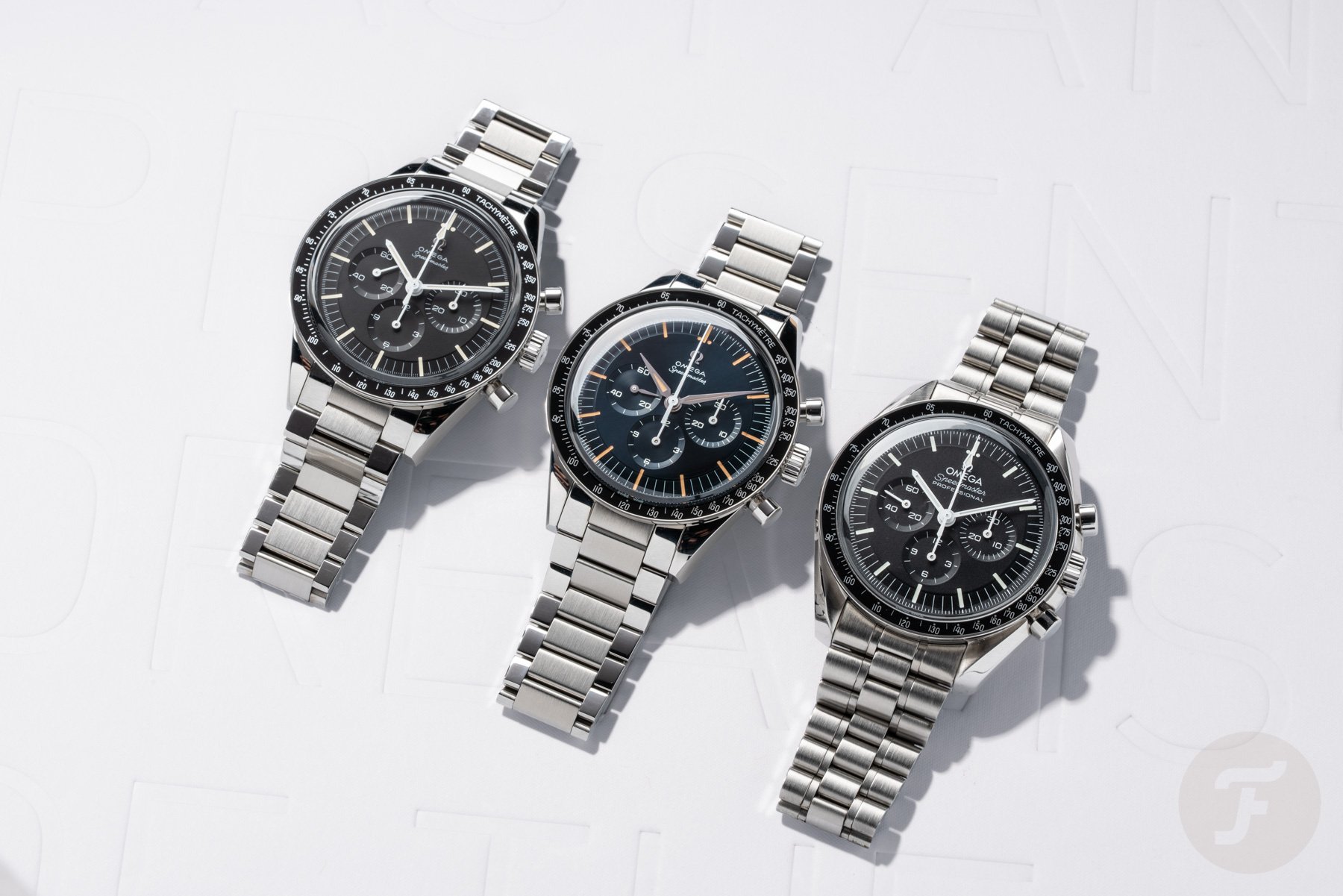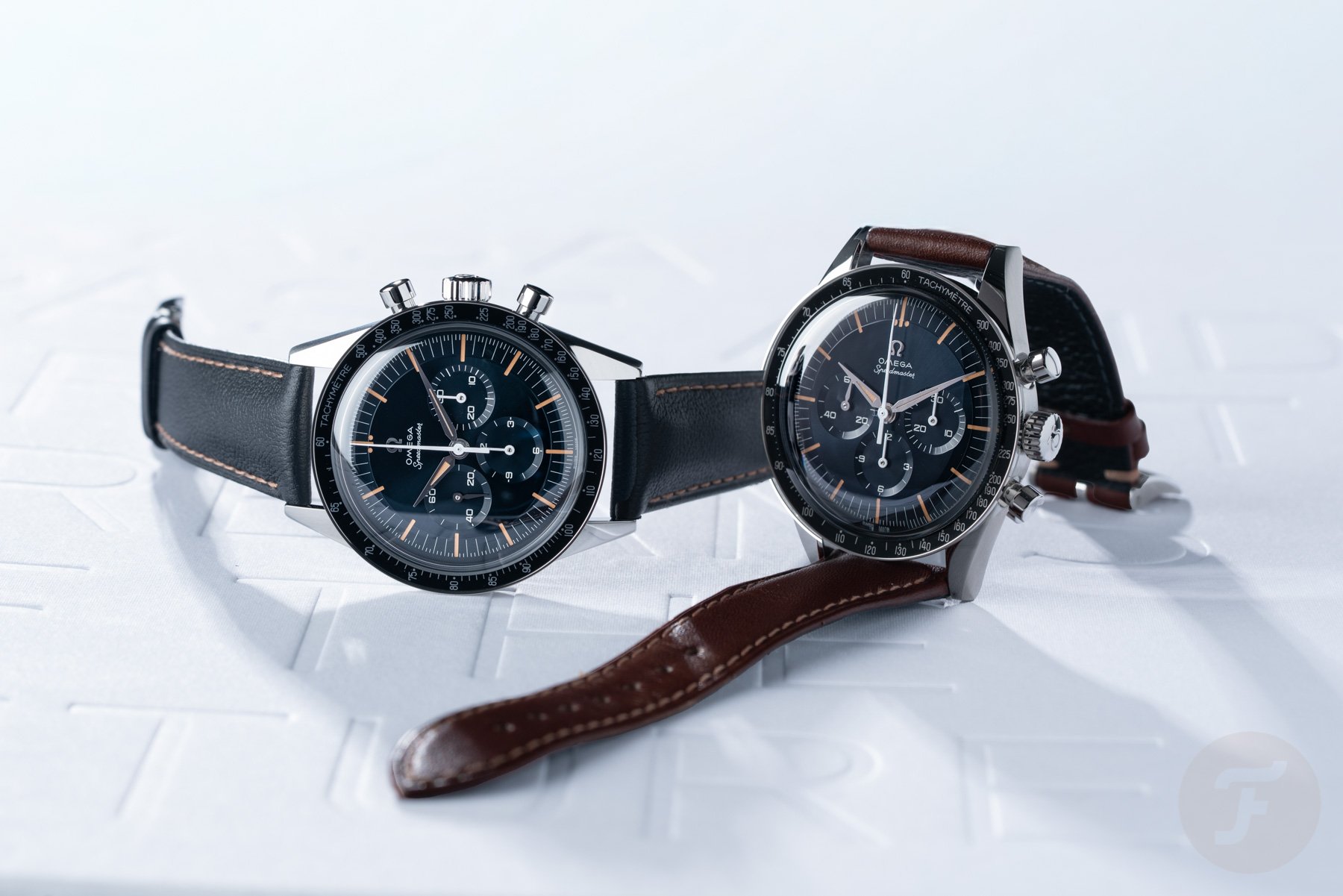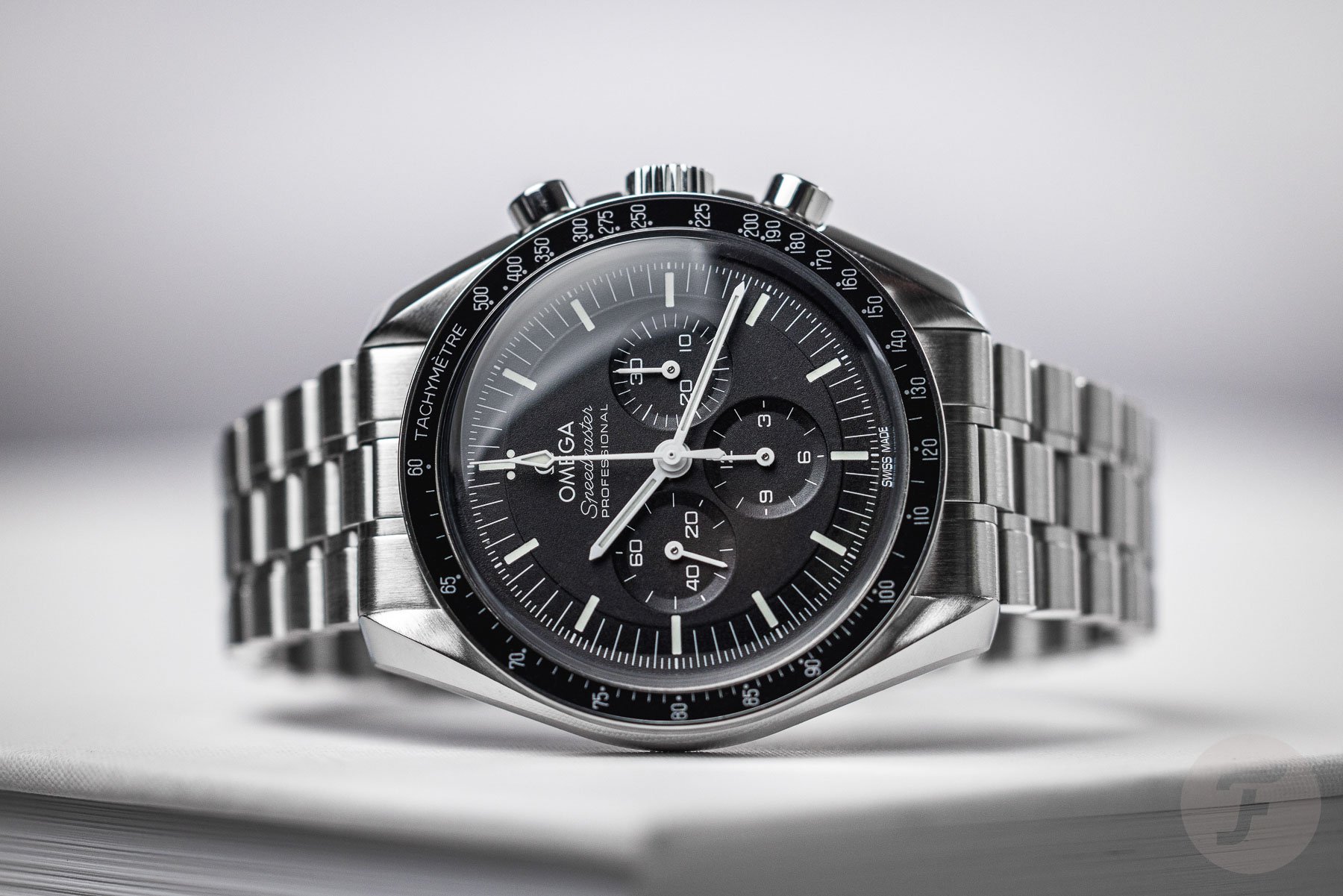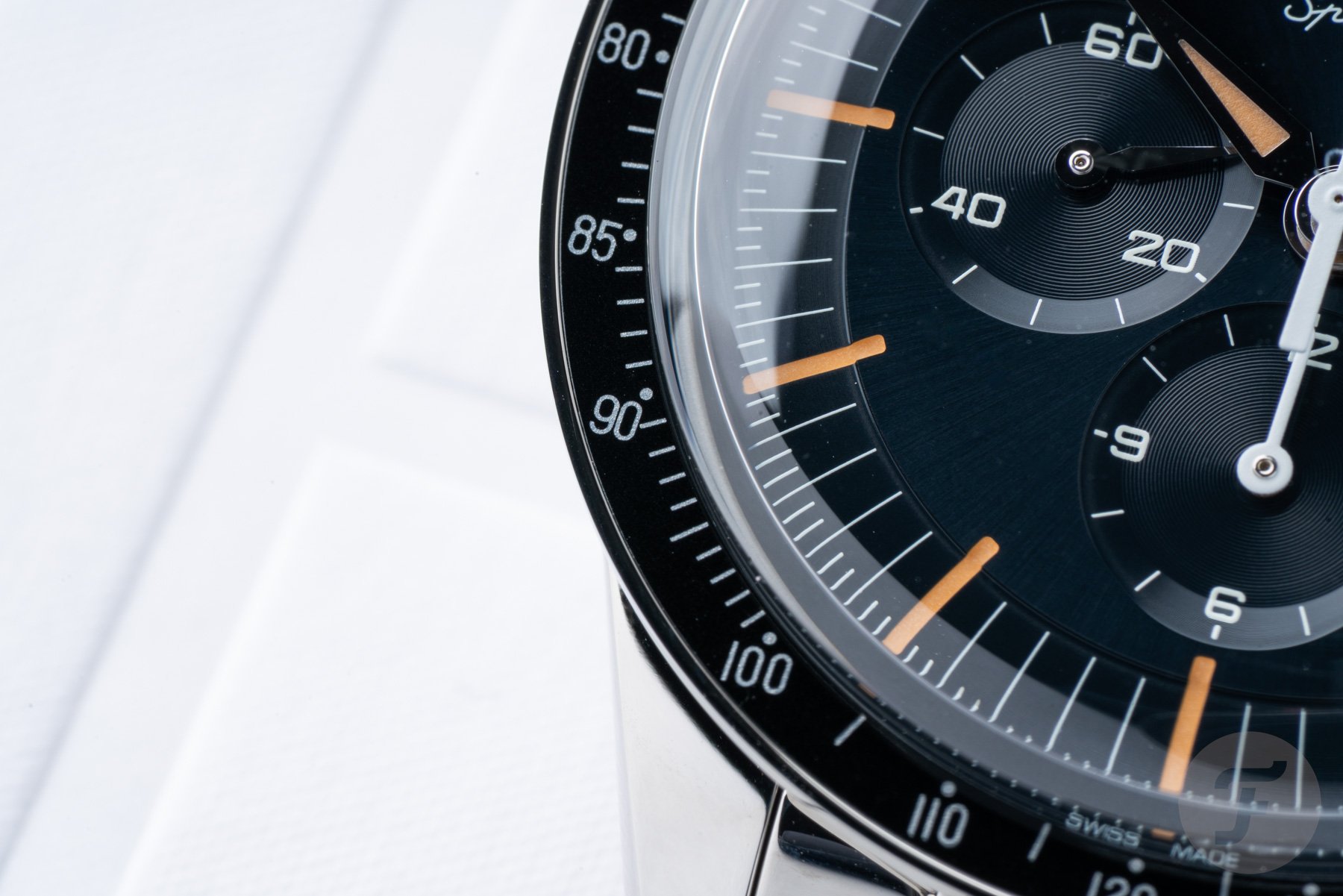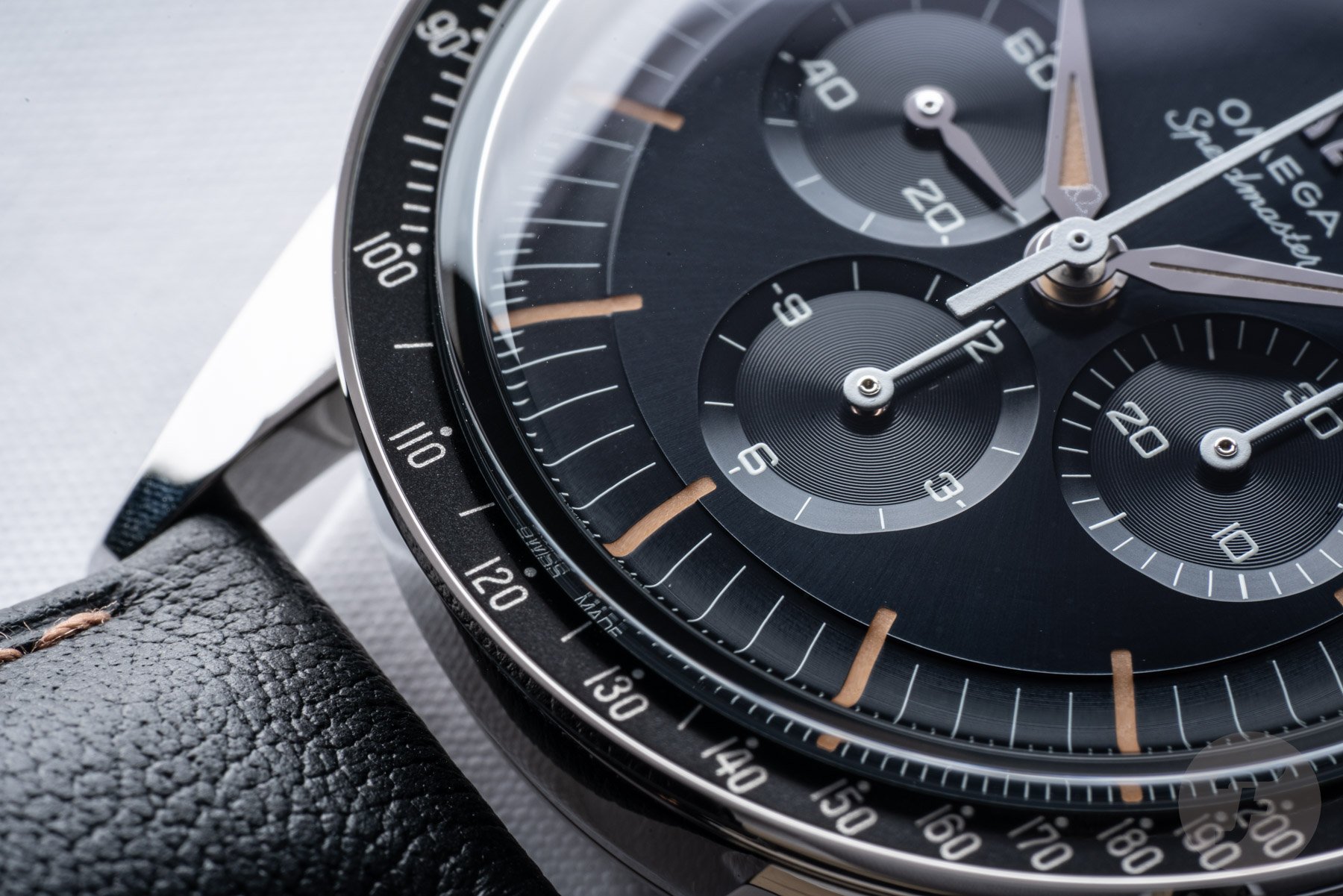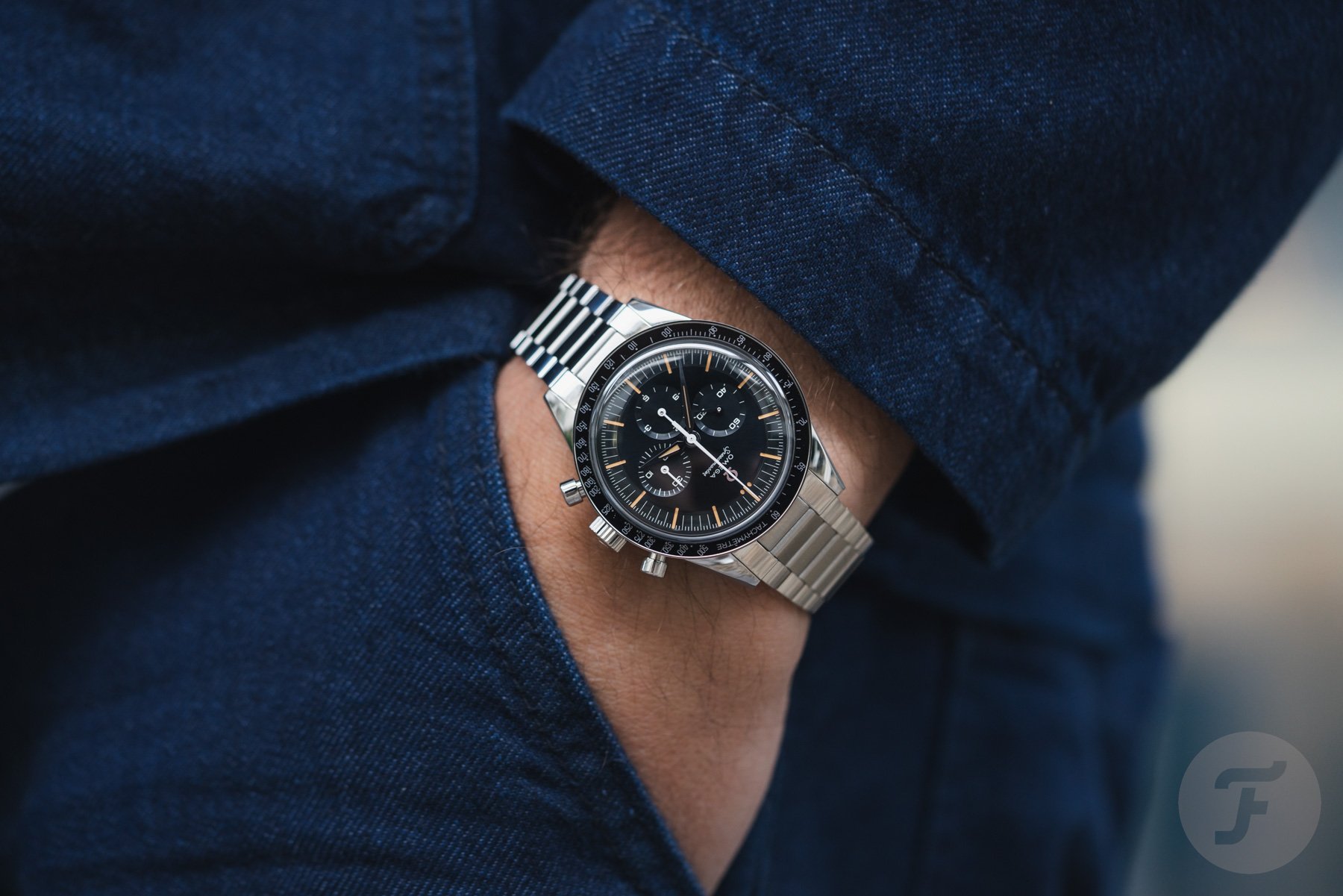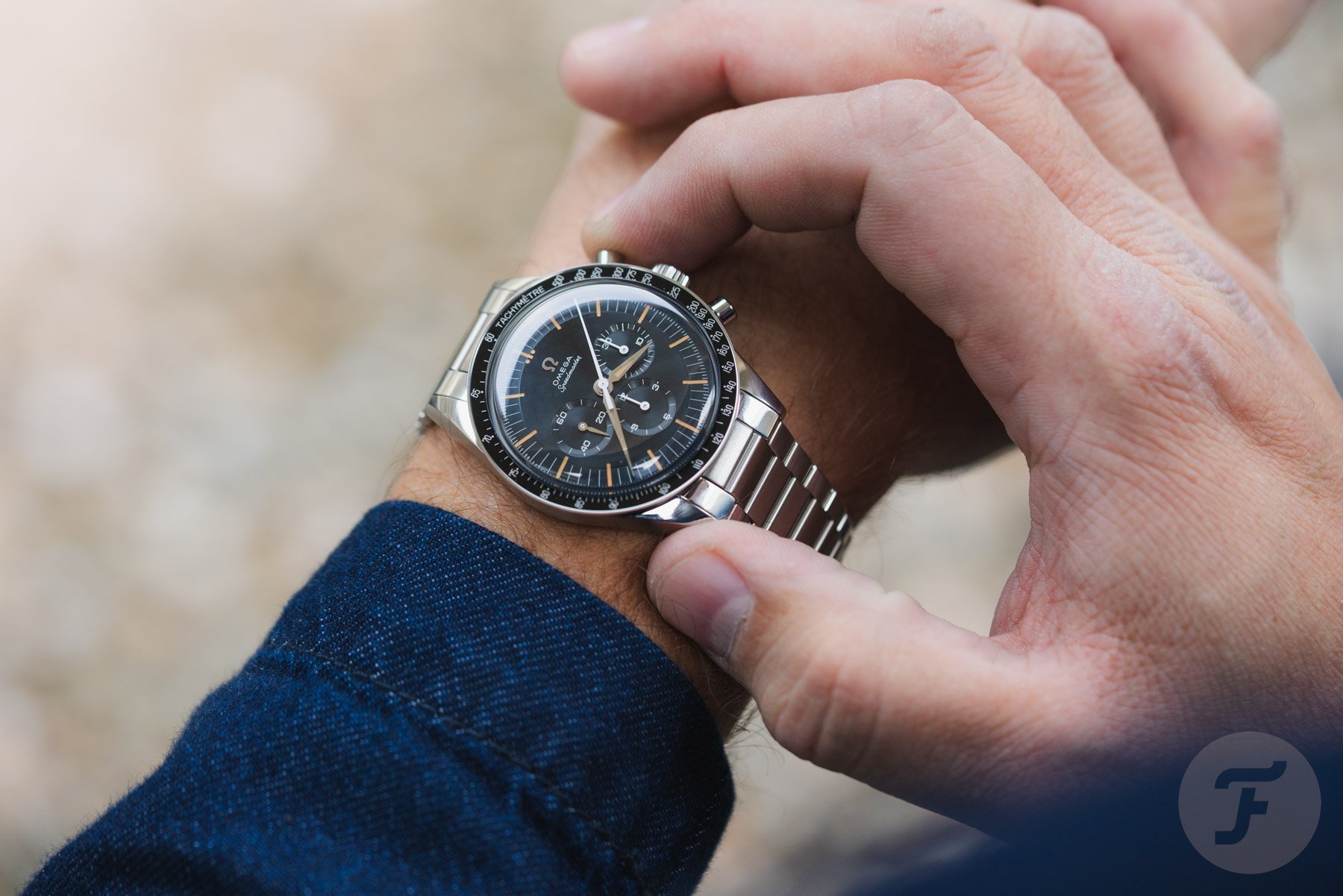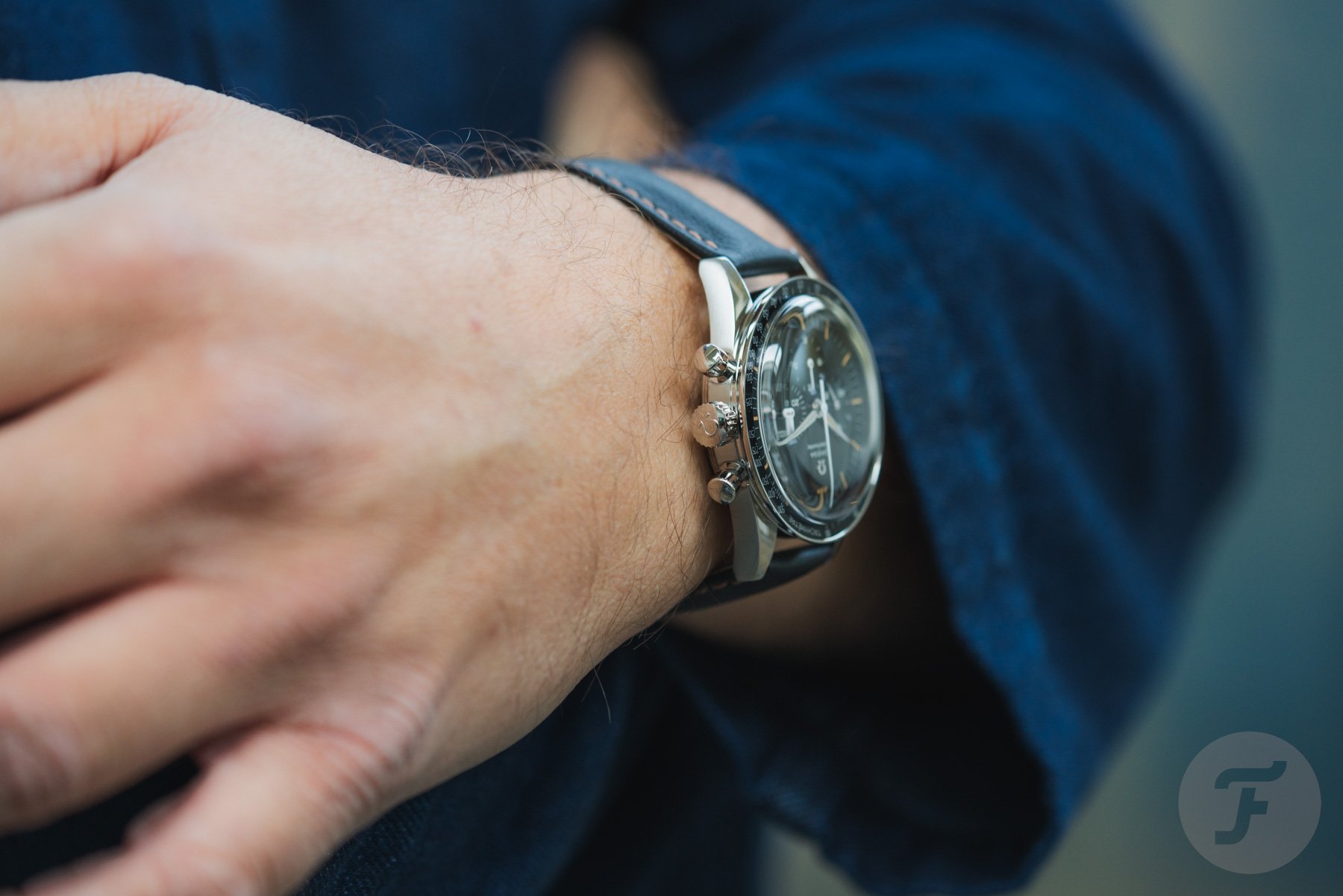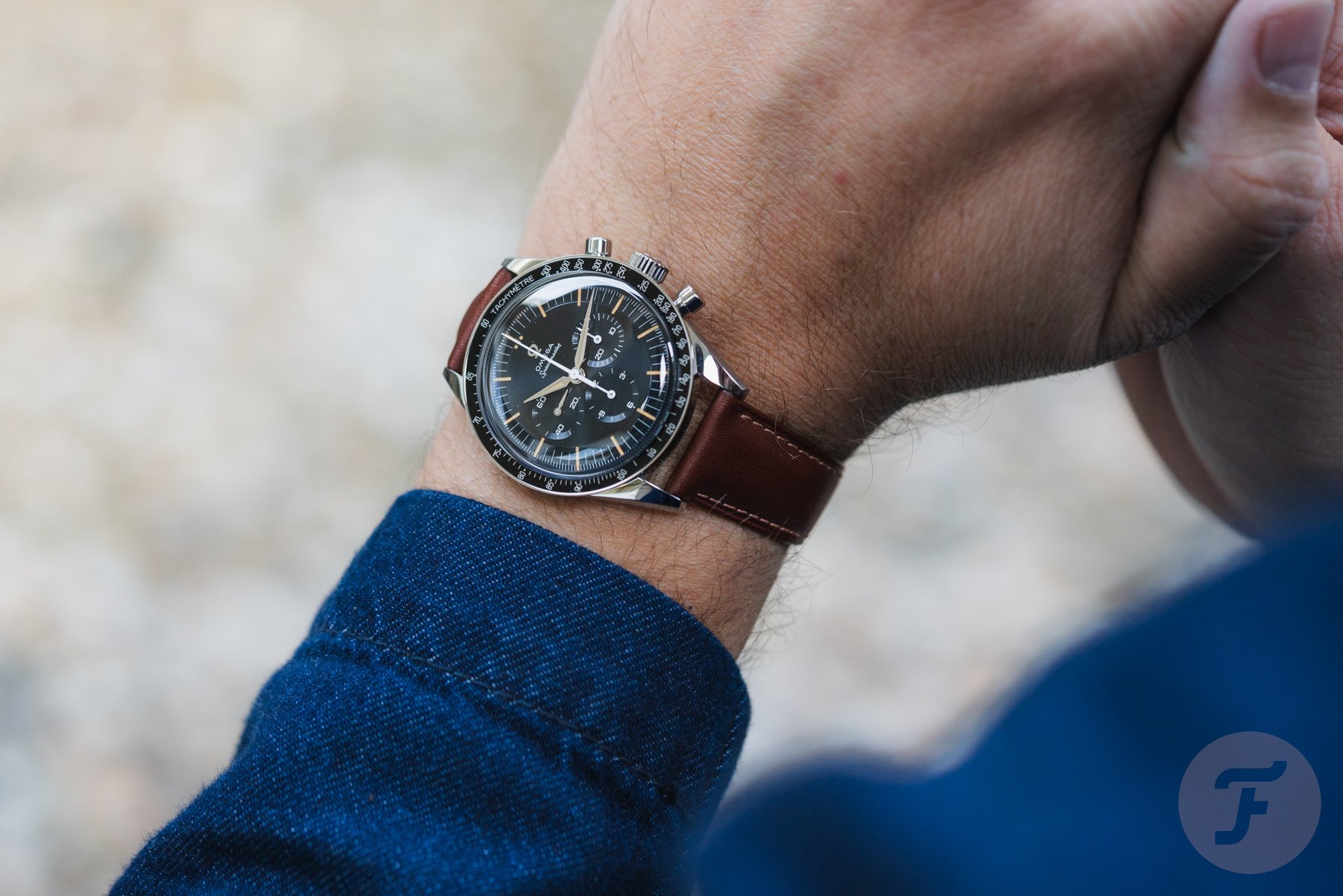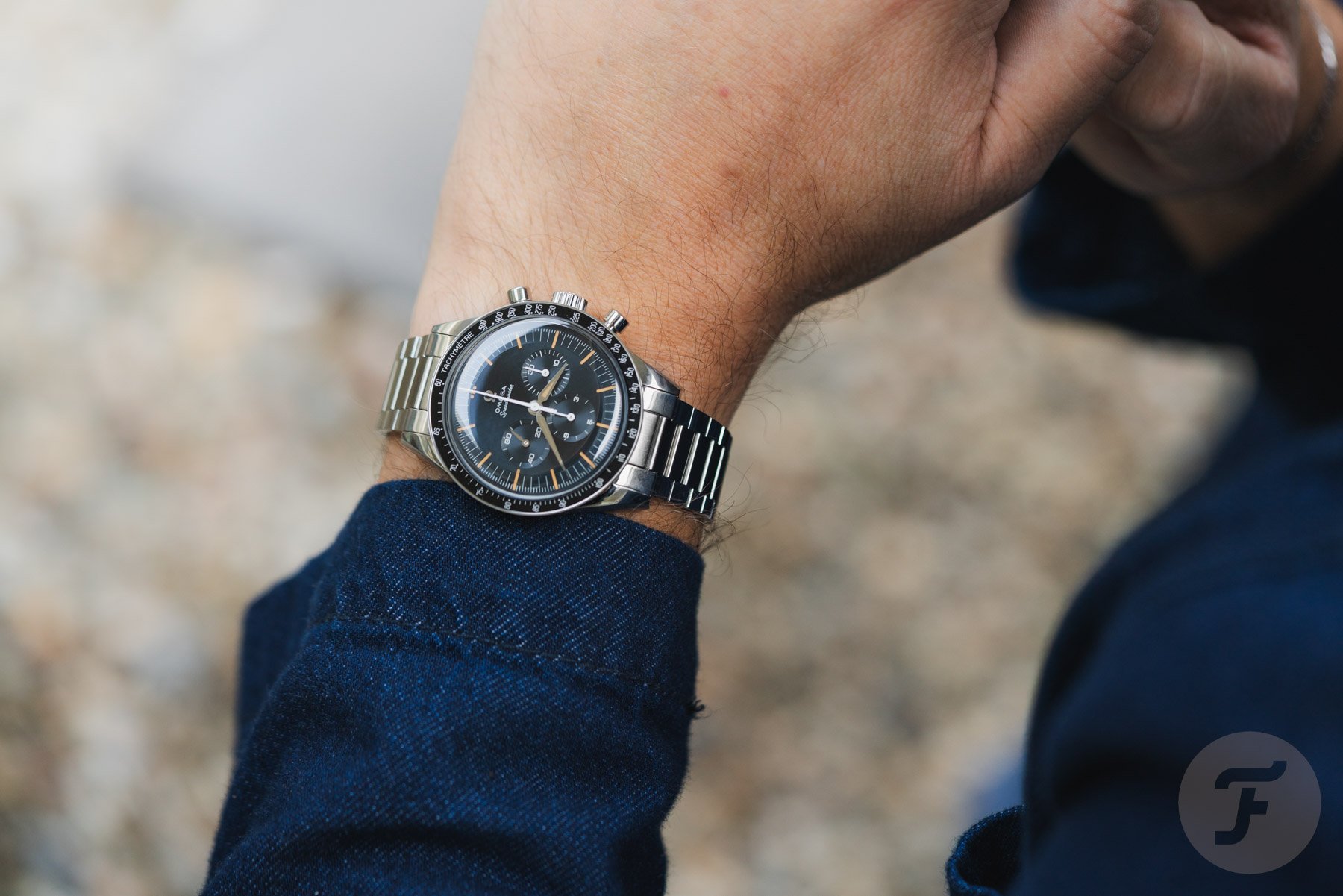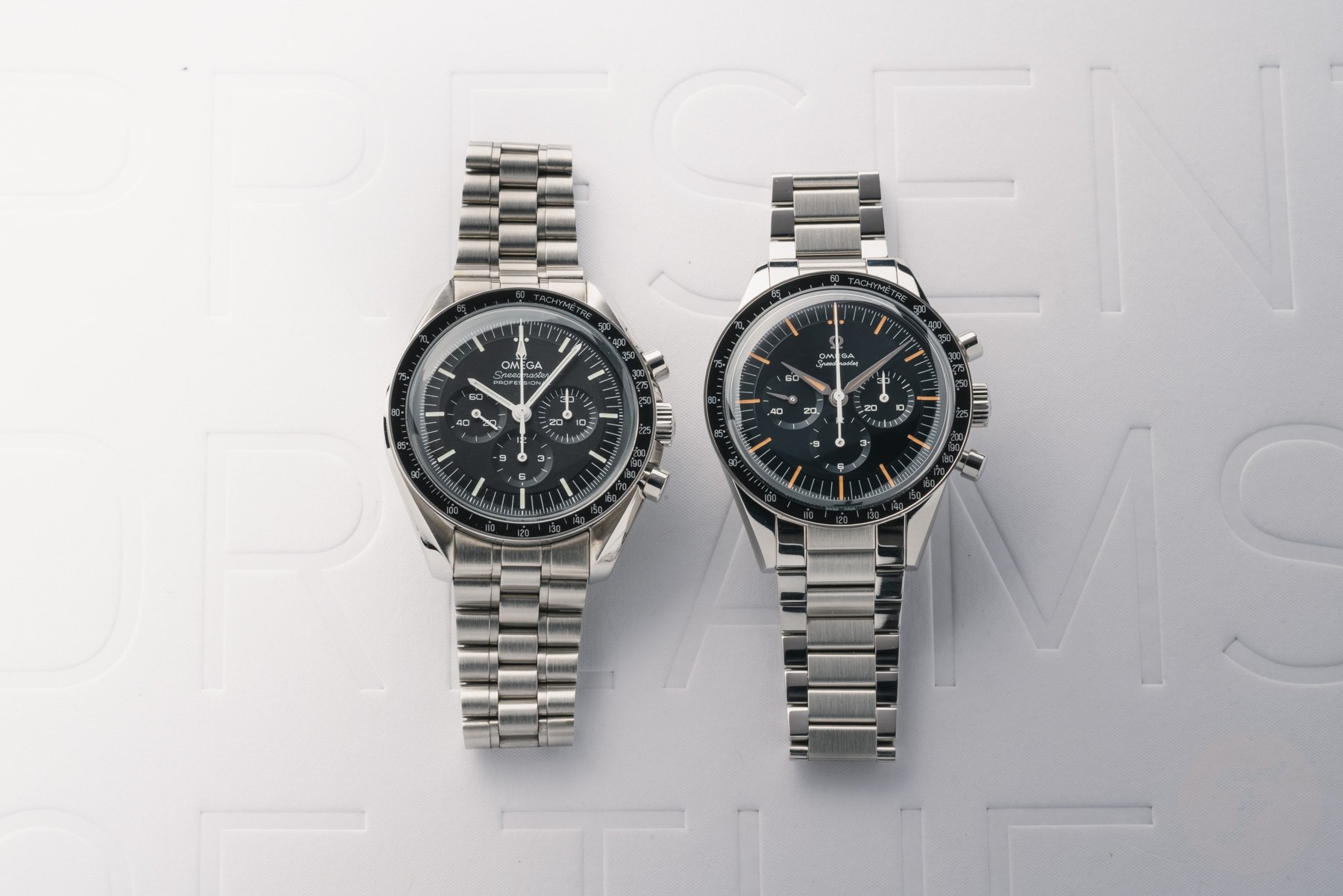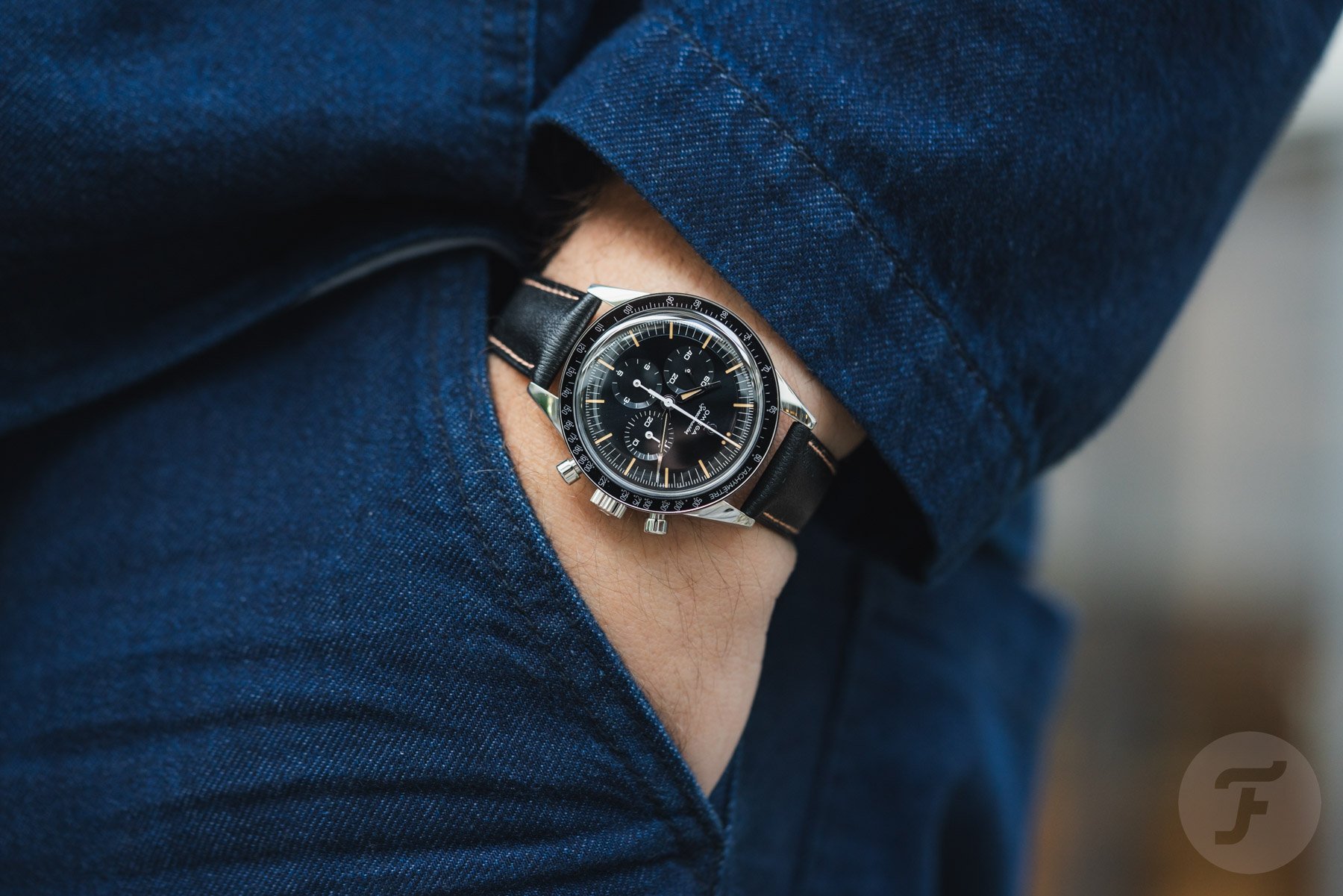I could make this a concise hands-on review. However, what I wanted to do when the Omega Speedmaster First Omega in Space (FOiS) landed on my desk was answer the question of whether this would be the Speedmaster for me. Ever since Omega unveiled the Speedmaster FOiS, the watch has intrigued me. First, I love the straight-lug Speedmasters. Both in size and design, I favor them over their lyre-lug counterparts. But what truly piqued my interest was the gray-blue dial with the contrasting vintage lume. The idea that Omega spiced up the dial of this second-generation FOiS seemed clever. About a year after its release, I finally had the time to spend with the watch and find a long-awaited answer to my question.
Ask me to pick one Speedmaster from Omega’s current collection, and my answer will be Speedmaster Calibre 321 “Ed White.” It’s been the answer ever since the brand introduced the watch in 2020. For me, that Speedmaster has it all. The design, caliber, finishing, and story make it my top pick. What certainly helped was that we had the chance to visit the dedicated Speedmaster Calibre 321 manufacture at Omega’s headquarters in late 2019. That was only a few weeks before the launch of the watch, and when we got a glimpse of it, we could feel the excitement in the air. Furthermore, witnessing the dedication and craftsmanship was truly impressive. As a result, it has been my unwavering pick for a modern Speedy for five years running.
The details of the Omega Speedmaster First Omega in Space
With that bit of information as background, you will probably understand why I like the Speedmaster FOiS so much, especially considering the price of the Speedmaster Calibre 321. The Ed White costs €17,100, which is nearly double the €8,700 price of the FOiS.
Another option is my favorite current Moonwatch, the one with the black dial and Hesalite crystal. Would I pick the current Speedmaster First Omega in Space over the Hesalite Moonwatch? Spending time with the FOiS would give me that answer, and having the chance to switch between the two was a great opportunity.
To refresh your memory, I’d like to go over the specs of Speedmaster FOiS. It has a 39.7mm stainless steel case with a 48mm length and a 13.4mm thickness, including the domed crystal. By comparison, the current Moonwatch has a 42mm diameter, a 47.5mm lug-to-lug, and a 13.2mm profile. As you can see, the current Moonwatch is larger in diameter but slightly shorter and thinner.
That results in more wrist presence, but it doesn’t actually feel that much bigger. It’s an interesting comparison because it doesn’t necessarily mean that the FOiS is the go-to option in terms of dimensions. However, there is a very different character to the straight-lug Speedy that I love, which sparked the idea for this comparison.
The manual-winding Omega 3861
Both watches house Omega’s 3861 movement. This manual-winding chronograph caliber operates at 21,600 vibrations per hour and offers a 50-hour power reserve. Unlike the previous 1861 movement, which powered the Moonwatch for years, the 3861 contains a Co-Axial escapement and a silicon balance spring. Additionally, it is Master Chronometer certified and visually stunning thanks to rhodium-plated bridges with Côtes de Genève finishing. That said, it is not visible here since the First Omega in Space has an all-steel case back.
The divisive dial of the Speedmaster First Omega in Space
Let’s get to what sets the current First Omega in Space and the Moonwatch apart. As mentioned, the difference in case design is an immediate standout. To me, the straight-lug case feels more utilitarian — more like a tool watch, if you will. However, the romance of the Moonwatch, with its asymmetrical case and lyre lugs, is undeniable. If that’s the story you’re after, the current Moonwatch is a brilliant modern version of the late-’60s classic.
The First Omega in Space features a black aluminum bezel insert and the famous Dot Over Ninety on its tachymeter scale. Additionally, the watch has a sapphire crystal with a similar shape to the Moonwatch’s Hesalite one, but the sapphire glass has an AR coating on the underside. This crystal helps maintain the watch’s vintage vibes without compromising on modern-day usability. However, the gray-blue dial of the Speedmaster FOiS, with its vintage-tone hour markers, drastically sets this watch apart from both the current Moonwatch and Speedmaster Calibre 321.
A lovely dial color
This dial replicates some of the original dials from the 1960s that left the factory with this specific gray-blue color. But it’s not just the color that sets it apart, as Robert-Jan explained in his Speedmaster FOiS introduction article last year. This dial was also updated compared to the one in the first-generation First Omega in Space. The current dial now features a step down to the minute track. Also, the Omega logo and wordmark are in the same shape and style as those on the original CK2998 references.
The main discussion surrounding the dial centers on its sunray finish, complemented by the vintage lume color on the indexes and Alpha hands. These design choices have sparked no shortage of strong opinions among Speedy fans. The Fratello team is no different. My colleagues seem to either love or hate the dial, with no feelings in between. I happen to love the gray-blue tone and think it has a visual sparkle that beautifully brings the dial to life. It also adds a color to the Speedmaster collection that has a direct connection to the past and is different from the standard black dial.
Getting a feel for the gray-blue sunray dial
To my surprise, I also like the sunray effect. I am usually not a big fan of sunray dials, but it works well on this Speedmaster. Especially in natural light, the color changes beautifully from gray to blue and sometimes even to a dark blue that appears nearly black. It’s a super classy dial that works well with the vintage-looking Super-LumiNova. I would even call this lume light orange. After years of reviewing watches, I’ve also found that there is a clue to accepting vintage-inspired lume. If it’s done well, I see it as an actual color rather than mimicking something it is not. With this dial, I was able to see it as such rather than the fauxtina that many watch enthusiasts dislike.
As a result, I feel a visual attraction that takes an exciting step away from the standard black-and-white aesthetic of the Moonwatch. Furthermore, the FOiS is not trying to be something it isn’t. With that in mind, I couldn’t wait to put the watch on my wrist and wear it for a few days, comparing it to the current Moonwatch. To create a bit more context, we had three versions of the FOiS in for review. The first, my favorite, comes on a modern flat-link bracelet. The other two options were leather straps in black or brown. While these certainly look good, I would always buy the watch on the bracelet. However, there is something about the FOiS on a strap that stands out, and I will get to that later.
Wearing the new Speedmaster First Omega in Space
The modern flat-link bracelet is really well done. It feels super solid and looks great with its brushed center links and polished outer ones. Like the bracelet on the original CK2998, this one has 19mm end links. Additionally, the clasp features an easy-extension system inside, allowing a perfect fit on the wrist. Once I sized it for mine, I was ready to wear the watch for a couple of days.
The first thing that stood out to me was the dial, and my eyes couldn’t help but wander back to it again and again. It’s truly something different compared to a typical Speedy. I was surprised by how much I loved this dial. As mentioned, sunray dials don’t usually do it for me, but the effect adds a lot to the presence of this Speedmaster. It ensures that the color changes in almost every situation, ranging from gray to blue to nearly black. Because of this, I kept checking the dial constantly to see what color it would show. It’s a strong feature that instantly won me over with its appeal. And the lume? I like it in combination with the dial color, so I quickly grew to love the aesthetic.
Comparing the FOiS to the Moonwatch
Having said that, it also immediately creates a distance to the Moonwatch. Next to each other, they look so different that it’s hard to see them as alternatives to one another. The missing link would be the Speedmaster Calibre 321 Ed White because it has features of both watches. However, as we have already established, that is in a league of its own.
So, how did the Speedmaster FOiS feel on my wrist? Well, one great thing is that the sapphire crystal didn’t make me as conscious of wearing a watch that could be scratched easily. Sure, it is a mental thing that Speedmaster owners will tell you fades over time. And if you are really that scared of scratches, the sapphire version of the Moonwatch is a great option to avoid that stress. Another thing I noticed was that the FOiS on the black leather strap looks really classy. It has a surprisingly stylish presence that sets it apart from the utilitarian tool-watch aesthetic. I consider that a good thing. While I would pick different straps to match the dial, the visual versatility is a nice aspect that I didn’t expect to uncover.
Final thoughts on the Omega Speedmaster First Omega in Space
After switching between the First Omega in Space and the Moonwatch for a few days, I found an answer to my question. However, it was not the answer I was looking for, although it did cross my mind before the watches landed on my desk. The two watches are so inherently different that it is hard to compare them visually as equals. Additionally, the romance that accompanies each one is distinct. If you want a Speedmaster that connects directly to one of humanity’s greatest achievements, a story that has shaped the watch’s legacy, the Moonwatch is the only option.
However, if you’re looking for another part of Speedmaster history and love the classic straight-lug case, the First Omega in Space is an undeniably excellent option after the Ed White. This brings me back to the question of whether I would pick the Speedmaster First Omega in Space over the current Moonwatch. Honestly, I would not.
Is it going to be the Speedmaster Calibre 321 after all?
I’ve just dug myself a hole here because the true answer to my question is that I would want both! Since the watches represent different chapters in space exploration and have different stories and inherently distinct looks, they complement each other perfectly. Consequently, I would have to throw down a little over €17k for both of these watches. If you paid attention, you know where this is going. Yes, that kind of money would also get me…an Ed White! But that is a story for a different article.
Jorg Weppelink
2025-11-04 14:00:00

